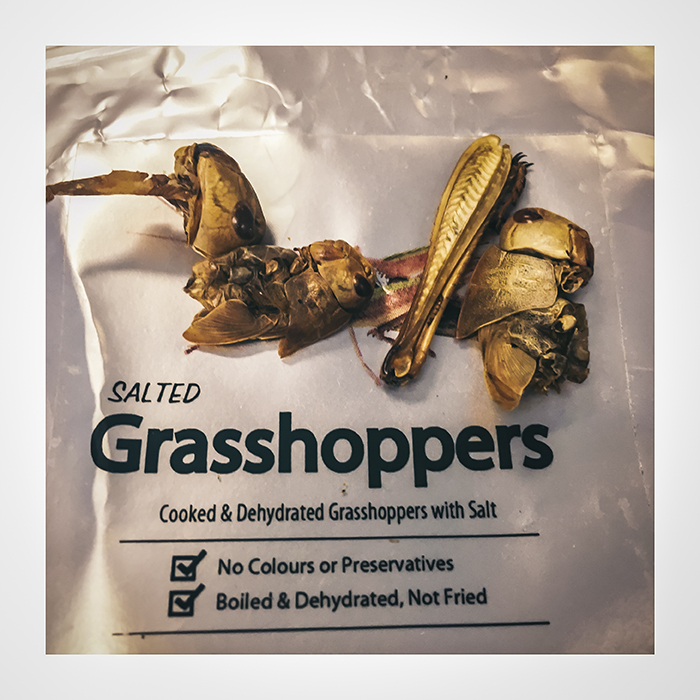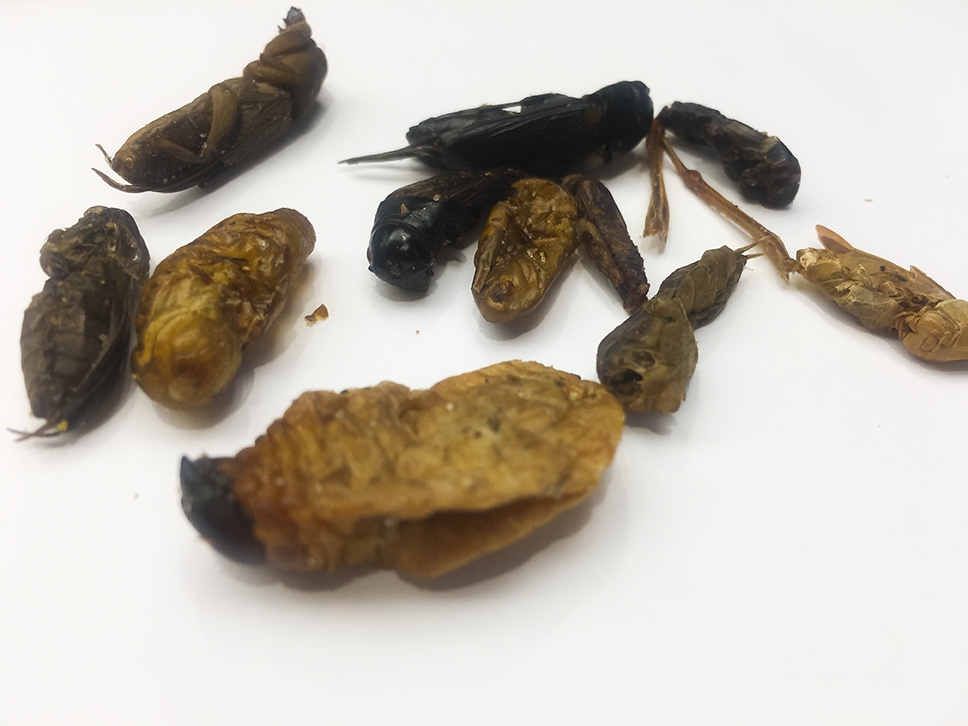When tracking food trends, one can usually look to the fanciest of fine dining to see what may trickle down into our magazines, Pinterest boards, grocery shelves, and finally into our shopping carts. Insects, however, have been crawling along a different pathway to the centre of our plate. The insects-as-food trend was born out of necessity. The trend speaks to our collective need to address food and animal feed security issues on an increasingly global scale.
Eating insects, or entomophagy, can provide a nutritious alternative to traditional protein sources. Often times, insects are even considered to have superior nutritional profiles to conventional livestock, boasting less saturated fat while providing beneficially balanced omegas, vitamins, minerals, and a favourable macronutrient breakdown (fat:protein:carbohydrate).
Insects are also an environmentally sound source of food, with lower emissions of methane than livestock and no land clearing necessary to farm them. They are powerful little converters, needing 12 times less feed than cattle to produce the same amount of protein. In terms of water consumption, only one gallon of water is needed to produce one pound of bug protein. They can be fed using organic waste streams and farmed with minimal requirements for infrastructure, making the farming of insects a low-cost, low-barrier option for entrance into the industry.

While it may sound new or foreign to some, eating insects has been a dietary practice of many cultures around the globe for millennia – often by choice. Humans come equipped with gastric juices containing chitinase, the enzyme responsible for breaking down the tough exoskeletons of insects. If you close your eyes and forget that what you’re eating has six legs, you will taste nutty notes, earthiness, bright grassy flavours, even bacon! Some insects are so neutral that they take on whatever flavour you want to add – chipotle lime crickets, anyone?
So what does this insect trend mean for Islanders? Well, for one, there is an entrepreneurial opportunity at hand. The increased demand for insects and related products (protein powders, for example) has created a gap in the market that’s being filled by startups backed by investors eager to latch on to the profit potential of this eating trend.

Beyond the curiosity factor of insect eating, the world’s population is expected to grow to 9 billion by 2050. This means we will need to increase food production by about 60% to maintain the population. Producing food and feeding the world in the most sustainable way possible will no longer be a choice, but a necessity.
There are several insect farm startup kits available online that can be sent directly to your door. If you’re on a shoestring budget, there are also a lot of resources for open-source bug farming to be found with a quick Google search. Go ahead, hack the trend!
If you’re not interested in farming the critters yourself, you can take a bite out of the trend with the many food products available online that will surely find their way into stores in our region sooner rather than later.
Bug appetit!
- MAKING YOUR OWN EDIBLES WITH CANNABUTTER - March 1, 2019
- THE HAIR OF THE DOG - April 19, 2018
- SIPPING, STRUMMING, AND SINGING - March 31, 2018
- ENGAGING STUDENTS’ MINDS - March 1, 2018
- Stepping Up to the Plate - October 1, 2017
- Fat Coffee, Fauxmage & Fresh Vegetables - August 1, 2017
- Purple is the New Green - June 1, 2017
- Food + Technology - May 1, 2017
- Food Trend – Sugar - March 1, 2017
- Food Trend – Zero Waste - February 1, 2017


